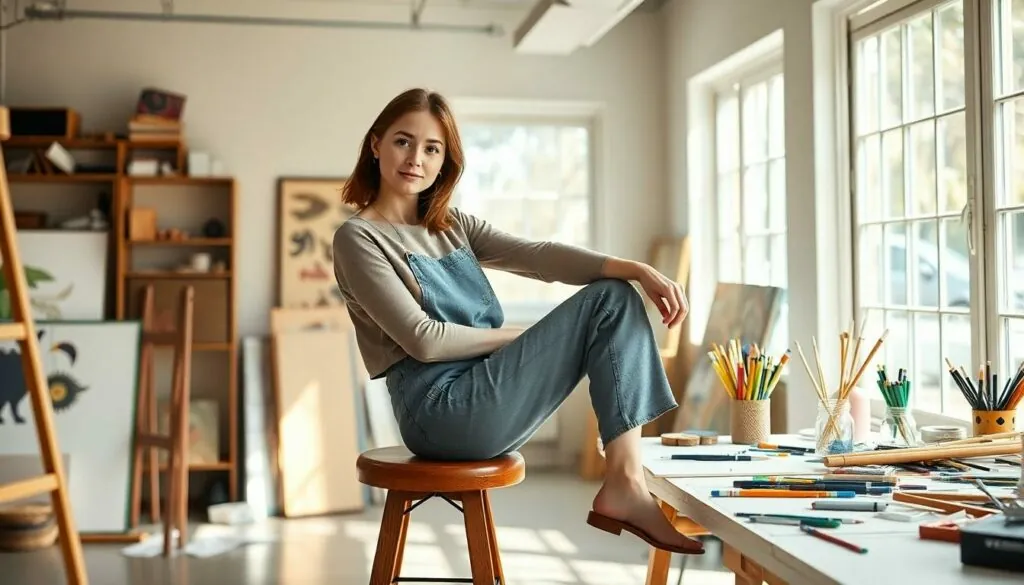Table of Contents
ToggleIn the world of art, capturing the essence of the female form can feel like trying to catch smoke with your bare hands. But fear not! With the right sitting drawing references, artists can transform that elusive beauty into stunning masterpieces. Whether you’re sketching a relaxed pose or a poised position, these references are your secret weapon to elevate your artwork.
Understanding Female Sitting Drawing References
Using female sitting drawing references is crucial for artists. These references guide the accurate representation of the female form across various poses.
Importance in Artistic Studies
Artistic studies benefit significantly from the inclusion of female sitting references. Such references provide a clear understanding of body proportions, weight distribution, and posture. When artists observe different sitting positions, they learn about dynamic interactions between the body and environment. These insights enhance skills, allowing for more natural and fluid representations. Many artists utilize these references to analyze various angles and lighting effects, improving their overall technique. Realistic depictions become achievable through constant practice using these essential references.
Common Challenges for Artists
Artists encounter several challenges when utilizing female sitting drawing references. One issue includes capturing natural body curvature in seated positions. Many struggle with portraying realistic muscle tension and relaxation simultaneously. Understanding balance often proves difficult, particularly in asymmetrical sitting poses. Artists may also grapple with proportions in a seated context, leading to distorted representations. Familiarity with anatomy affects their depiction of movement and fluidity. Overall, overcoming these challenges promotes growth and fine-tunes their artistic abilities.
Types of Female Sitting Poses

Exploring various sitting poses enhances an artist’s understanding of the female form. Both static and dynamic poses play significant roles in artistic studies.
Static Poses
Static poses showcase a sense of stability and calm. Artists often utilize these to capture the essence of relaxation. Common examples include a woman seated with legs crossed or one resting comfortably on a chair. In these poses, the body often exhibits balanced weight distribution, allowing for accurate portrayal of proportions. The spine remains straight or gently curved, providing insight into posture. Mastery of static poses helps artists convey a wide range of emotions, allowing deeper emotional connection in their work.
Dynamic Poses
Dynamic poses convey movement and energy. Artists find these particularly challenging but rewarding. A woman leaning forward or gesturing with her hands exemplifies engagement and life. Capturing shifts in weight and tension closely aligns with observing real-life interactions. These poses often feature asymmetry, emphasizing natural curves and muscle tension. Observing dynamic poses encourages artists to study anatomy in-depth, leading to more fluid and realistic representations. Integrating these references ultimately enriches the artistic process and enhances creativity.
Resources for Finding References
Artists can access a variety of resources to find female sitting drawing references. These tools enhance their understanding of form and pose, helping them create compelling artwork.
Online Platforms
Numerous online platforms offer vast libraries of images and references. Websites like Pinterest and Unsplash provide user-generated content that showcases diverse sitting poses. Additionally, platforms such as Instagram feature artists and models sharing unique snapshots, allowing for real-time inspiration. Artists can also explore dedicated art resource sites like Line of Action and Quickposes, which supply timed sessions to practice drawing dynamic poses. Each resource plays a crucial role in broadening an artist’s visual reference pool.
Books and Publications
Books and publications serve as valuable resources for understanding female form and posture. “The Anatomy of Style” by David McKean delves into the intricacies of body mechanics. “Figure Drawing: Design and Invention” by Michael Hampton offers practical exercises focused on capturing natural poses. Additionally, art magazines often feature articles and tutorials showcasing various techniques for drawing figures. Each of these publications helps refine artistic skills and promotes deeper comprehension of the human figure.
Tips for Using Drawing References Effectively
Using drawing references effectively enhances artistic representation of the female form. These methods help in grounding artistic choices and refining skills.
Analyzing the Poses
Analyzing poses involves observing body proportions and weight distribution. Artists should focus on angles and curves to grasp how they contribute to overall posture. Start by sketching key shapes, then develop details around those foundations. Notice how gravity influences the body in different seated positions. Understanding these dynamics helps in replicating realistic forms and fluidity in artwork.
Incorporating Personal Style
Incorporating personal style transforms basic references into unique creations. Artists often blend references with their interpretation to express individuality. Experimenting with line quality and texture can create distinct visual effects. Different palettes also contribute to the overall mood of the artwork. Adapting references while keeping essential anatomical details fosters creativity without sacrificing accuracy.
Utilizing female sitting drawing references is an invaluable practice for artists aiming to master the intricacies of the female form. By exploring both static and dynamic poses, artists can deepen their understanding of anatomy and enhance their ability to capture movement and emotion. The resources available today offer a wealth of inspiration and guidance, making it easier than ever to refine skills.
Incorporating these references into daily practice not only aids in achieving realistic representations but also fosters personal artistic growth. As artists experiment with various techniques and styles, they can create unique interpretations while maintaining anatomical accuracy. Embracing this journey will undoubtedly lead to more confident and expressive artwork.







